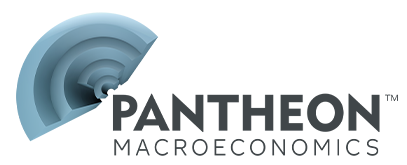Pantheon Publications
Below is a list of our Publications for the last 5 months. If you are looking for reports older than 6 months please email info@pantheonmacro.com, or contact your account rep.
Please use the filters on the right to search for a specific date or topic.
Yet more grim news on the labor market.
Manufacturing is surviving rather than thriving.
Q3's strength is unlikely to be sustained.
In one line: Q3's strength is unlikely to be sustained.
GROWTH AND INFLATION RISKS SHIFT DOWN...
- …BUT WE STILL THINK INFLATION WILL PROVE STICKY
- We think GDP grew by 3½% in Q3, underpinned by a solid increase in consumers’ spending.
- AI-related capex likely also lifted fixed investment, while net trade made a big positive contribution too.
- But growth seems to have slowed sharply in Q4, mostly due to weakness among households.
- China’s residential sales are still slumping in December, with weakness across all city tiers.
- Tier-one city pre-owned housing prices sank, amid reports of a surge in listings of low- to mid-end units.
- Policymakers seem resigned to a protracted recovery, with no new ideas at the CEWC.
- EZ consumer confidence dipped at year-end, but consumers’ spending should hold up anyway.
- Risks are balanced; inflation in items bought regularly is rising, but the saving rate remains high.
- EZ current account figures show services exports started Q4 on a weak footing, the same as goods.
- Q3 GDP growth was unrevised at 0.1% quarter-to-quarter, down from 0.2% in Q2.
- Business investment in Q3 was revised up, and declining borrowing costs should boost credit flows.
- The household saving rate fell to 9.5% in Q3, from 10.2% in Q2, and should continue to drop in 2026.
In one line: China's LPRs unchanged for seventh straight month amid lower tariff risks
China's LPRs unchanged for seventh straight month amid lower trade risks
THE PAUSE IN THE FED’S EASING CYCLE WILL BE BRIEF...
- ...THE LABOR MARKET WILL REMAIN WEAK, INFLATION FALL
ECB TO HOLD THE LINE AS BOE AND FED CUT FURTHER...
- …ITS NEXT MOVE WILL LIKELY BE A HIKE, IN 2027
- In one line: Downside news focused in volatile items and partly driven by early discounting, while underlying inflation pressures remained firm.
Limited further upside for sales.
- In one line: Post-Budget relief boosts manufacturing sentiment, but activity will rise only slowly in 2026.
In one line: Little holiday cheer for EZ households at year-end.
- In one line:Budget chaos hits retail sales, but arguably by less than might have been feared.
- In one line: Weak house price inflation in October means we cut our Q4 forecast.
